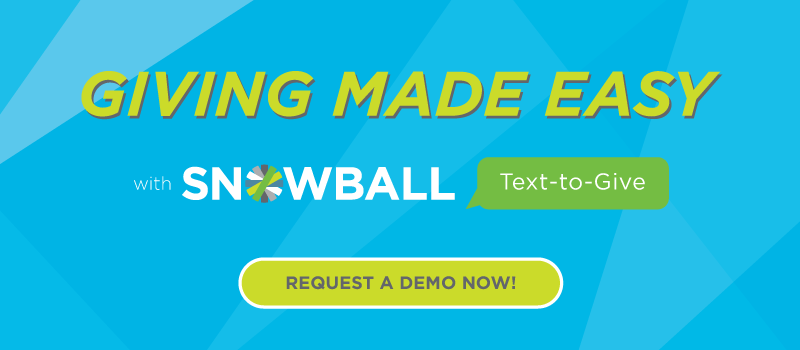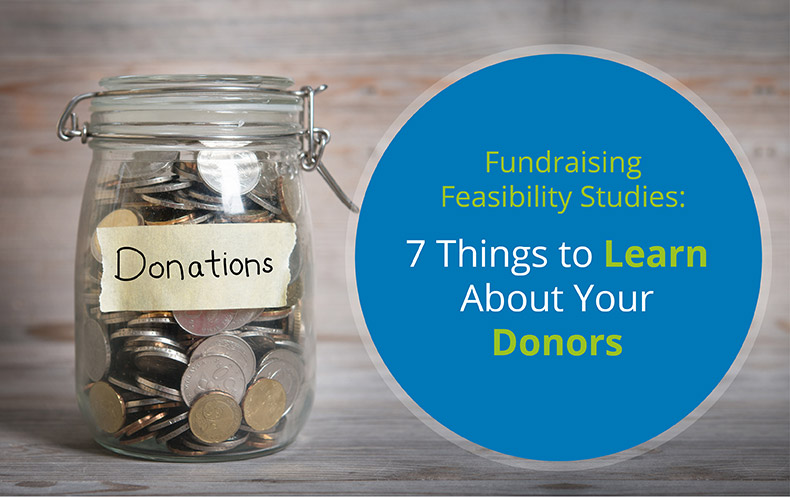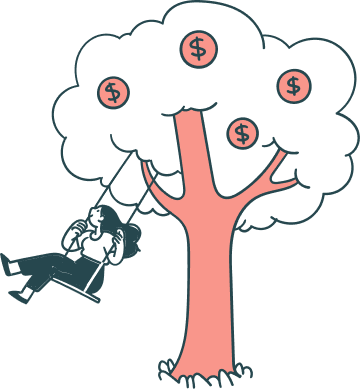[boc_message type="e.g. information"]FREE BONUS: Download our online donation tools eBook. It's chock full of tips to help you pick the perfect software![/boc_message]
Fundraising feasibility studies are targeted interview efforts that precede a capital campaign or a large project. Usually, a fundraising consultant will interview 20-40 stakeholders about their perceptions of your nonprofit and the campaign you’re proposing.
As such, fundraising feasibility studies are incredibly useful for preparing and planning a campaign. But there’s an added benefit to spending time with key contributors and asking them for their thoughts and opinions — the chance to learn more about your donors!
Aside from organizational leaders and community vendors, your study will seek interviews from current and former major donors as well as planned gift and legacy donors.
Among organizational leaders and community vendors, your study will seek interviews from:
- Current and former major donors
- Planned gift and legacy donors
You’ll have the opportunity to conduct one-on-one, in-person interviews with these high-impact contributors.
In this guide, we’ll go over some of the top things your fundraising feasibility study can teach you about donors. This starts with understanding:
- How donors perceive your nonprofit’s reputation
- Who should take on leadership roles
- How much donors are willing to give (and why!)
- The strength of your fundraising strategies
- The effectiveness of your communications
- Donors’ questions and concerns
- What kinds of advice can donors give to your nonprofit
Let’s dig into what this information can reveal about your donors and why it’s important for your organization. To learn more about conducting a fundraising feasibility study, check out this guide courtesy of Aly Sterling Philanthropy.
1. How donors perceive your nonprofit’s reputation
Your nonprofit’s reputation is incredibly important for the sustainability of your organization. Even if donors are contributing to your organization financially, they may have qualms that are holding them back from increasing their giving levels.
Your charity, school, or healthcare organization could be missing out on contributions if you don’t take the time to assess how people in the community perceive your organization.
Your nonprofit’s reputation can encompass:
- Whether donors deem your organization competent and legitimate
- Whether you use funds for their intended purposes
- If donors trust you
- If donors perceive that your organization has a positive impact on the community
- If donors find your organization to be organized and well-managed
It may seem to be a given that your most dedicated contributors support and trust your organization. However, these interviews can elicit their more complex thoughts on your reputation.
For example, a major donor isn’t likely to think of your organization as illegitimate. This same donor, though, may express that as much as they love your organization, it certainly takes a long time to confirm that a gift is being put toward its intended use. The in-between time period can be tense and unsatisfying for the donor, who then feels more reserved about contributing in the future.
In contrast, you may learn your nonprofit’s strengths from an outside perspective, which you can capitalize on in your future marketing and communications.
The goal here is to learn what participants really think and feel about your nonprofit and leadership.
These key insights can help you address public perceptions that you weren’t even aware of. Knowing what your donors value about your nonprofit and what they aren’t so fond of can help you target future publicity and emphasize the strengths and impact that will most resonate with supporters.
In short, if you understand how donors perceive your organization, you’re more likely to reach them by addressing their concerns and emphasizing your strengths as an organization.
2. Who should take on leadership roles
Your donors are already leaders in your organization. Their contributions, after all, are what’s keeping your mission afloat!
If you’re performing a feasibility study, you probably have a large project in the works, such as a capital campaign (which comes with it’s own set of considerations when you’re conducting a feasibility study). That means you’ll need key figures to take on leadership roles, such as:
- Campaign chair(s)
- Steering committee members
- Planning committee members
- Volunteer coordinator
Your feasibility study is the perfect opportunity to identify the leaders who are right for the job.
Interviewers usually ask donors:
- Who they think would be a good fit for a leadership role
- If they would be willing to take on a leadership role themselves
Not only will you learn which donors have an interest in leadership (and as such, further engagement with your organization), but you’ll also learn which stakeholders are the most respected and supported in your organization.
By capitalizing on the leadership talents in your nonprofit, you can structure teams and committees more effectively. Strong leaders can keep everyone on the same page and focused on the most important organizational goals. As such, your nonprofit’s overall performance can improve.
Plus, donors who are willing or eager to offer their services are ready for further engagement. For these valuable contributors, your nonprofit should consider routes to increase their involvement to their satisfaction.
The most obvious means of doing this is to provide them with a role during your upcoming campaign. That said, think of this information as more than a one-time opportunity.
You can also provide them with further engagement through:
- Membership programs
- Tailored volunteer opportunities
- Testimonials and personal statements to be used in marketing
- Advocacy campaigns
- Event support, such as speeches or ribbon-cutting
In short, donors who are ready to take on leadership positions can be a huge asset to your nonprofit. Use your most respected leaders to fill important campaign roles, and engage donors seeking leadership opportunities beyond the campaign itself.
3. How much donors are willing to give (and why!)
The amount that donors are willing to contribute to your campaign is vital to determining your campaign’s fundraising goal and developing your gift range chart.
As such, your nonprofit feasibility study is a tool to gain estimates of your donors’ contributions.
It’s important to depict as accurate and complete a picture as possible. You wouldn’t, for instance, want to bank on a major donation that will never come or overlook a potential source of funds.
But even more so, understanding how much your donors would be willing to give to this campaign can help you better understand your donors’ giving habits in general. Think about it this way: your nonprofit generally learns about donors’ giving behavior by tracking data and asking for donations.
But with your feasibility study, you’re not asking for a gift then and there. Instead, your organization is conducting an interview that should ultimately feel like a conversation. This study is a chance for donors to react to your project and your nonprofit without the added pressure of being asked for gifts directly.
Thus, you have an incredible opportunity to learn not just how much donors are willing to contribute, but why. Figuring out what resonates with them and what triggers their support is invaluable for future fundraising.
Your feasibility study is a formal cultivation opportunity; use it to tease out your donors’ giving motivations to craft the most effective asks for your current and future campaigns!
In short, donors may provide a more in-depth picture of how much they’d be willing to contribute to your campaign in the study’s interview setting. Use the information you gather to tailor your future asks and flesh out your donor profiles.
4. The strength of your fundraising strategies
When your nonprofit asks for donations, what makes a donor say “yes” or “no”? Which campaigns and fundraising strategies do your donors remember fondly, and which seemed to fall flat?
Your fundraising feasibility study is the perfect opportunity to learn which fundraising strategies are most effective.
You may argue that your nonprofit already tracks fundraising data, so you already know which strategies work the best. But talking to your donors directly will provide the context you need to truly understand where you’ve gone wrong in the past and where you’ve excelled.
For example, let’s say you hosted a postcard fundraising campaign that saw a low ROI. Your first instinct may be to cut postcards out of your fundraising strategy entirely, but without knowing why the campaign didn’t work, you run the risk of repeating your mistakes or losing out on fundraising potential. There are tons of reasons that the campaign may have shown a low ROI, including:
- The suggested gift sizes were too large for the donors who prefer mailed communications
- Your donor database is outdated, and many of the postcards never made it to donors’ current addresses
- The font size was too small, so donors couldn’t read them
- Your call-to-action was unclear, and many misinterpreted the postcard as a stewardship communication, rather than a direct ask
- The postcards weren’t branded, so donors mistakenly tossed them out
- You campaign was poorly timed, as many donors were already involved in an ongoing peer-to-peer campaign
The possibilities are endless, and you just won’t know until you ask. And while it’s best to gain feedback on your fundraising strategies directly after each campaign, your feasibility studies are the perfect chance to circle back on feedback or fill in any gaps you may have missed.
Plus, you’ll gain insight into the campaigns that stick in your donors’ minds.
If they’re still praising a campaign from many years ago, you know you have a gem. Likewise, if you keep hearing about a campaign that just didn’t work, you can prioritize those mistakes as the ones to avoid at all costs.
In addition, for those nonprofits who may need some assistance, a capital campaign consultant can come in handy for helping you survey donors and assess your fundraising initiatives from an experienced, third-party perspective.
In short, your feasibility study is a chance to gain insight into the effectiveness of your nonprofit’s fundraising strategies. Donors may bring up campaigns that were highly effective or that just didn’t resonate, and you can use the study to understand exactly why donors harbor the feelings that they do.
5. The effectiveness of your communications
Major donors aren’t likely to contribute major gifts to crowdfunding campaigns, and your nonprofit wouldn’t text a donor asking for a major contribution (if you’re interested in the awesome donation channel that is text-to-give, learn how to use it properly with this in-depth guide).
The way you communicate with donors is important, and in many cases, key to soliciting major gifts in the first place.
As such, many organizations stick with phone calls and in-person meetings when it comes to their most high-impact contributors.
While this communication strategy is usually effective, your nonprofit would be remiss if it didn’t pry deeper into the channels that effectively engage your donors. An interview setting is a unique opportunity to learn not just how your donors prefer to engage with your nonprofit, but how they interpret your communications.
In other words, is the message you’re sending being received?
For example, your fundraising feasibility study is an opportunity to gain direct donor feedback on one of your project’s most important and pivotal communications — your case for support. From these interview conversations, you can determine whether the case for support is:
- Compelling
- Effectively conveying the need and urgency for the project
- Well-branded and aesthetically pleasing
- Clear and concise
- Supported with enough client testimonials or statistics
- Formatted in an effective medium (i.e. brochure vs. PDF)
All of your campaign’s communications should be derived from your case for support. After all, it is the justification for your nonprofit’s existence and for the project’s need. Thus, by strengthening this one central communication with donor feedback, you’ll be well-equipped to adapt the communications that follow to your donors’ needs.
In short, you can use donor feedback on your case for support to develop your campaign’s communications, as well as future communications, so that they speak your donors’ language. Plus, understanding the communication channels that are most effective will help you reach your donors where they already are.
6. Donors’ questions and concerns
It’s impossible to encapsulate everything that you’ll learn about your donors in a single list. After all, every organization is unique and so are its donors.
The makeup of a church administration will differ significantly from that of university board, and for that reason, it’s impossible to anticipate the myriad ways that donors will react to your proposed project.
As such, it’s important to keep interviews open-ended so that donors feel free to express any questions or concerns they may have. Addressing these concerns is a great way to deepen your relationships with donors, engage them further in your project, and embolden their commitment to a donation.
Just think about it. If your nonprofit strives to mediate concerns and answer questions, you’re demonstrating that you value your donors’ feedback and take their queries seriously. Learning about your donors’ pressing concerns — and addressing them — is a fantastic cultivation tool.
Plus, your interviewer can identify themes across different donors that will help you strengthen your case for support and otherwise cement support for your project. For example, if multiple donors are concerned about the timing of your campaign, you may want to rethink your strategy and delay another fundraising initiative that could detract from your project. Or, you may want to emphasize why the timing is ideal in your case for support, communications, and direct asks.
In short, knowing where your donors are uncertain can help you clarify your case for support, further map out the details of the project, and deepen your donor relationships.
7. What kinds of advice can donors give to your nonprofit
As you reach the end of your nonprofit’s fundraising feasibility study, be sure to give interviewees the opportunity to offer advice to your organization.
Your feasibility study should be seen as a chance to give stakeholders an active role in your campaign; after all, there’s a lot your team can learn from them!
Since you chose your study’s participants based on their history with your organization, their standing in the nonprofit field, or their desirability as a prospect, give them the chance to offer up advice for how you can improve your campaign plan.
They might suggest:
- Changing the campaign timeline
- Adjusting your desired fundraising goal
- Stewarding additional prospects
It’s helpful to have an advice period at the end of your study so that your participants can have a chance to bring up things your team may not have thought of before. For example, if they think you’re missing out on stewarding a key donor demographic, they can steer your team in the right direction.
However, there’s another strategic benefit to opening up the floor to advice from your interviewees. The more of an active role they take in shaping your campaign plan, the more likely it is that they’ll support your plan when it’s in action!
In short, make sure you let stakeholders know that you want their advice and not just their passive impressions of your campaign plan.
Understanding your donors is key to receiving donations. Your fundraising feasibility study is the perfect tool to learn how your donors tick and apply that information to increase your chances of a successful campaign.
Additional Resources
- Buying Fundraising Software. Your fundraising feasibility study can help you identify your most effective fundraising strategies. To really maximize your fundraising, you’ll need the right software at your side. Check out this guide to purchasing the best software for your fundraising needs.
- Fundraising Thermometers. Your feasibility study should reveal your fundraising goal. A fundraising thermometer can help you keep track of the progress you make toward your goal during your campaign.
- Aly Sterling’s Philanthropy’s Guide to Hiring a Fundraising Consultant. If you’re conducting a feasibility study, you’ll need the assistance of a fundraising consultant. Learn how to hire the perfect fit with this ultimate guide!











